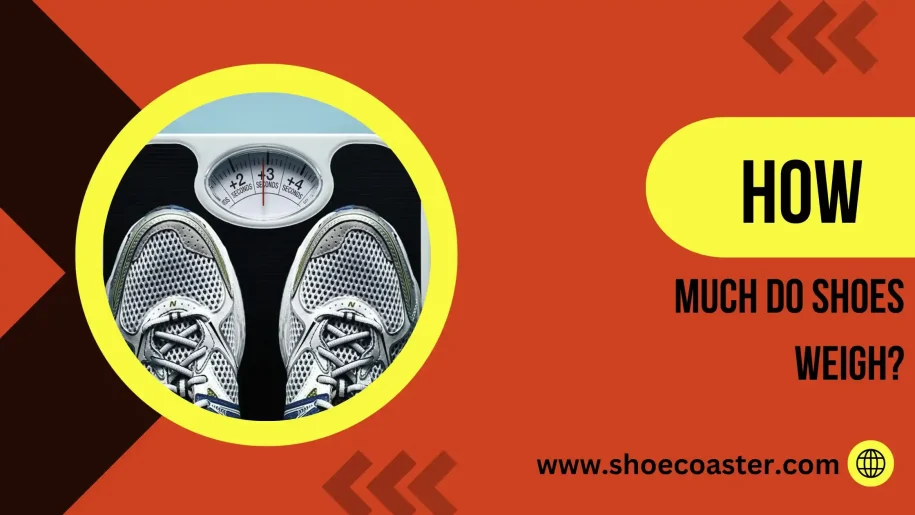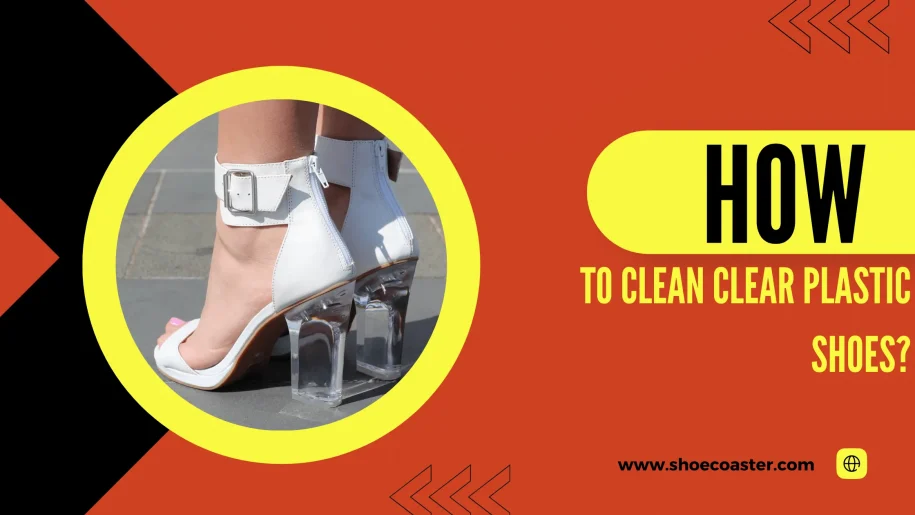You may be surprised to find out that the weight of various types of shoes can vary considerably. From comfy sneakers to stylish high-heels, a pair weighs up to several ounces or pounds!
We will explore how much a variety of shoe styles and materials weigh to help you better understand what makes each type unique. We’ll also look at some tips to lighten the load if needed. So prepare yourself for an in-depth exploration into all things related to shoe weight.
Shoe weight can profoundly impact performance, comfort, and wearability. A lightweight shoe can improve efficiency and reduce fatigue, especially in activities that involve a lot of foot movement, such as running. On the other hand, heavier shoes offer more protection and durability. Here’s a look into the science behind shoe weight, considering both materials and design factors:
1. Materials:
Natural vs. Synthetic:
Natural materials like leather and cotton tend to be heavier than many synthetic materials. Modern shoes, especially those designed for sports and performance activities, often use synthetic materials like nylon, polyester, or engineered mesh for their lightweight and breathable properties.
Foams and Cushioning:
The midsole, which provides cushioning, is typically made of foam. EVA (ethylene-vinyl acetate) is a standard lightweight foam in many shoes. More advanced materials, such as Adidas’s Boost or Nike’s React, are designed to provide cushioning while being lightweight.
Outsoles:
Rubber is commonly used for outsoles due to its durability and traction properties. However, the density and type of rubber and the amount used can influence weight. Minimalist shoes might use thinner outsoles to reduce weight.
Reinforcements:
Materials added for structural support or durability, like toe caps, heel counters, or shank reinforcements, add weight to shoes. The choice of these materials and their placement can impact overall shoe weight.
2. Design Factors:
Purpose of the Shoe:
Running shoes aim to be lightweight to increase efficiency. In contrast, hiking boots prioritize protection and support, often making them heavier.
Shoe Geometry:
The shoe’s overall shape and design, including the sole’s thickness, height of the upper, and the inclusion of additional features like ankle supports, can influence weight.
Construction Method:
How a shoe is constructed can also affect its weight. For instance, a stitch-down construction method might add more weight than a cemented or bonded method.
Breathability and Perforations:
Introducing perforations or using mesh materials can reduce weight while increasing breathability.
Additional Features:
Elements like waterproof linings, metal eyelets, or additional fastening systems (like straps or buckles) can add weight.
How Much Do Shoes Weigh on Scale?
The weight of shoes can vary widely based on their type, materials, and size. On average, a pair of running shoes for adults might weigh between 500 grams and 1 kilogram (1.1 to 2.2 pounds).
Heavier footwear like boots can weigh considerably more, with some reaching weights of up to 2 kilograms (4.4 pounds) or even more for a pair. Conversely, lightweight sandals or ballet flats might weigh as little as 250 to 500 grams (0.55 to 1.1 pounds) for a pair.
When considering children’s shoes, they will generally weigh less due to their smaller size. If you’re trying to determine the impact of shoe weight on travel luggage or for shipping, it’s always a good idea to use a precise scale to measure the specific pair in question.
Why Does Weight Matter?
Studies have shown that shoe weight can influence running economy. A rule of thumb suggests that for every 100 grams added to a shoe, a runner’s oxygen consumption rises by about 1%. Thus, lighter shoes might improve efficiency, especially over longer distances. However, balance is critical; a shoe that needs more light might lack the necessary support or durability.
In conclusion, while a shoe’s weight is influenced by a myriad of design choices and materials, the most suitable choice for an individual depends on the intended activity, personal preference, and physiological factors.
The Weight Range: Comparing Different Types of Shoes:
Shoe weight varies considerably based on design, intended use, and materials. Here’s a general breakdown of weight ranges for various types of shoes:
Running Shoes:
Minimalist: 100-200 grams (3.5-7 oz) per shoe
Standard: 200-300 grams (7-10.5 oz) per shoe
Maximalist: 300-400 grams (10.5-14 oz) per shoe
Basketball Shoes:
300-500 grams (10.5-17.6 oz) per shoe. Weight varies due to the added ankle support and cushioning.
Soccer Cleats:
150-300 grams (5.3-10.5 oz) per shoe. Lighter shoes offer agility, while heavier ones provide more protection.
Hiking Boots:
400-800 grams (14-28 oz) per shoe, depending on the design and purpose (day hiking vs. backpacking).
Dress Shoes:
Depending on the materials and construction, 300-500 grams (10.5-17.6 oz) per shoe.
Sandals/Flip-Flops:
100-300 grams (3.5-10.5 oz) per shoe. Materials and thickness play a significant role in weight. Remember, these are approximate ranges, and individual shoe weights can fall outside of these based on brand, design innovations, and specific models.
Lightweight vs. Heavyweight Shoes: Pros and Cons
Lightweight Shoes:
Pros:
- It is easier to move and walk in, especially over extended periods.
- Less weight can mean reduced leg and foot fatigue during prolonged wear or activity.
- It benefits activities requiring quick foot movement, such as certain sports or dancing.
- Lightweight shoes often feature materials that offer improved ventilation.
- If they get wet, they typically dry faster than heavier alternatives.
Cons:
- It is often made with thinner materials that might wear out faster.
- It might offer less protection against environmental factors or during rough usage.
- It does not provide adequate support, especially for those needing specific foot or arch support.
Heavyweight Shoes:
Pros:
- It is typically constructed with more robust materials that withstand wear and tear.
- Offer better protection against the elements, rough terrains, and potential hazards.
- Heavier shoes can provide better stability, especially on uneven surfaces.
- Often provides better overall foot support, beneficial for certain activities or those with specific foot needs.
Cons:
- This can lead to a quicker onset of foot and leg fatigue.
- It is often made with materials that could be more breathable.
- If they become wet, they might take longer to dry.
- The added weight can hinder quick and agile movements.
How To Choose The Right Shoe Weight for Your Needs?
- A hiker would have different needs compared to a sprinter. Always align your shoe choice with the primary activity you’ll be engaging in.
- Regardless of weight, a shoe will only serve you well if it is comfortable. Always consider fit and comfort as top priorities.
- If you’re going to be on your feet for extended periods, lighter shoes might be more beneficial. Conversely, short durations with a need for protection favor heavier shoes.
- Those with specific foot issues or conditions might require the support and stability that often come with heavier, more structured shoes.
- Try on shoes before purchasing. A short walk around the store gives insight into how they’ll feel during regular use.
- Consider prioritizing durability and protection over time in wet, muddy, or rough terrains. On the other hand, dry, flat landscapes allow for lighter shoes.
- If the shoes are for occasional use, you might prioritize factors like protection or style overweight. But for daily wear, comfort and weight might become more critical.
Ultimately, choosing between lightweight and heavyweight shoes depends on individual needs, preferences, and the specific scenarios in which the shoes will be worn. A balanced approach, considering all factors, will ensure you make the best choice for your feet.
Conclusion:
We have established that shoes come in many different weights, depending on the type you prefer and the materials used to make them. Understanding how much your shoes weigh allows you to determine what style works best for you.
Furthermore, this could help you tailor your shoe collection depending on when and where you must wear them. If you want a light pair of shoes for running or a more protective and heavy pair for hiking or snowboarding, there’s an option that will work for you, and with the correct weight information, it will be easier to find the perfect fit!







